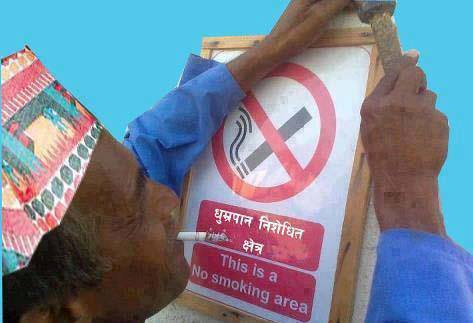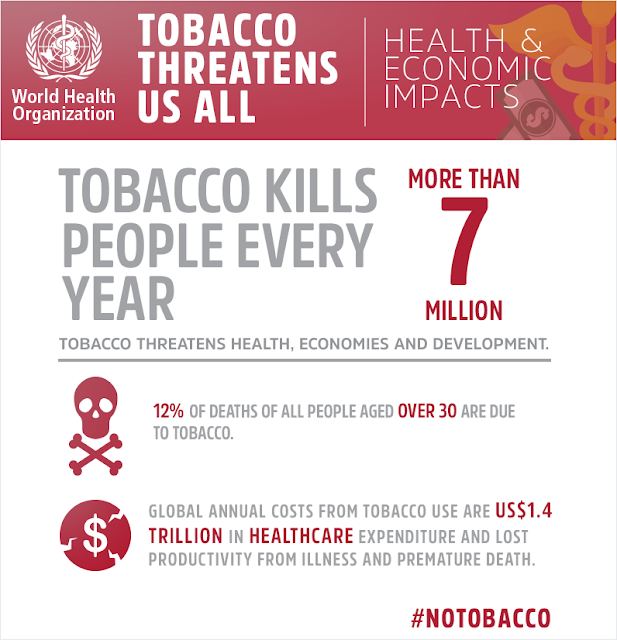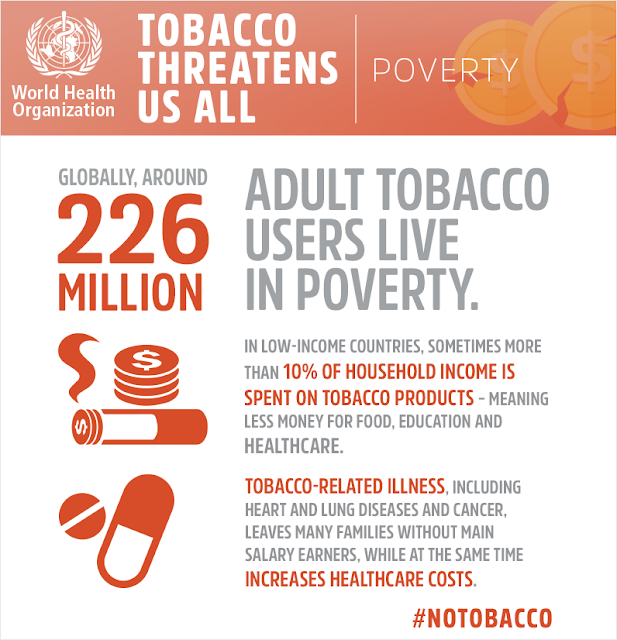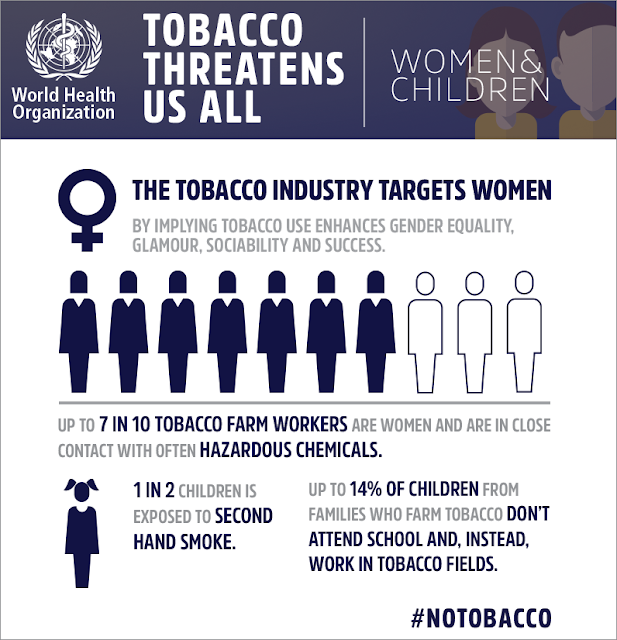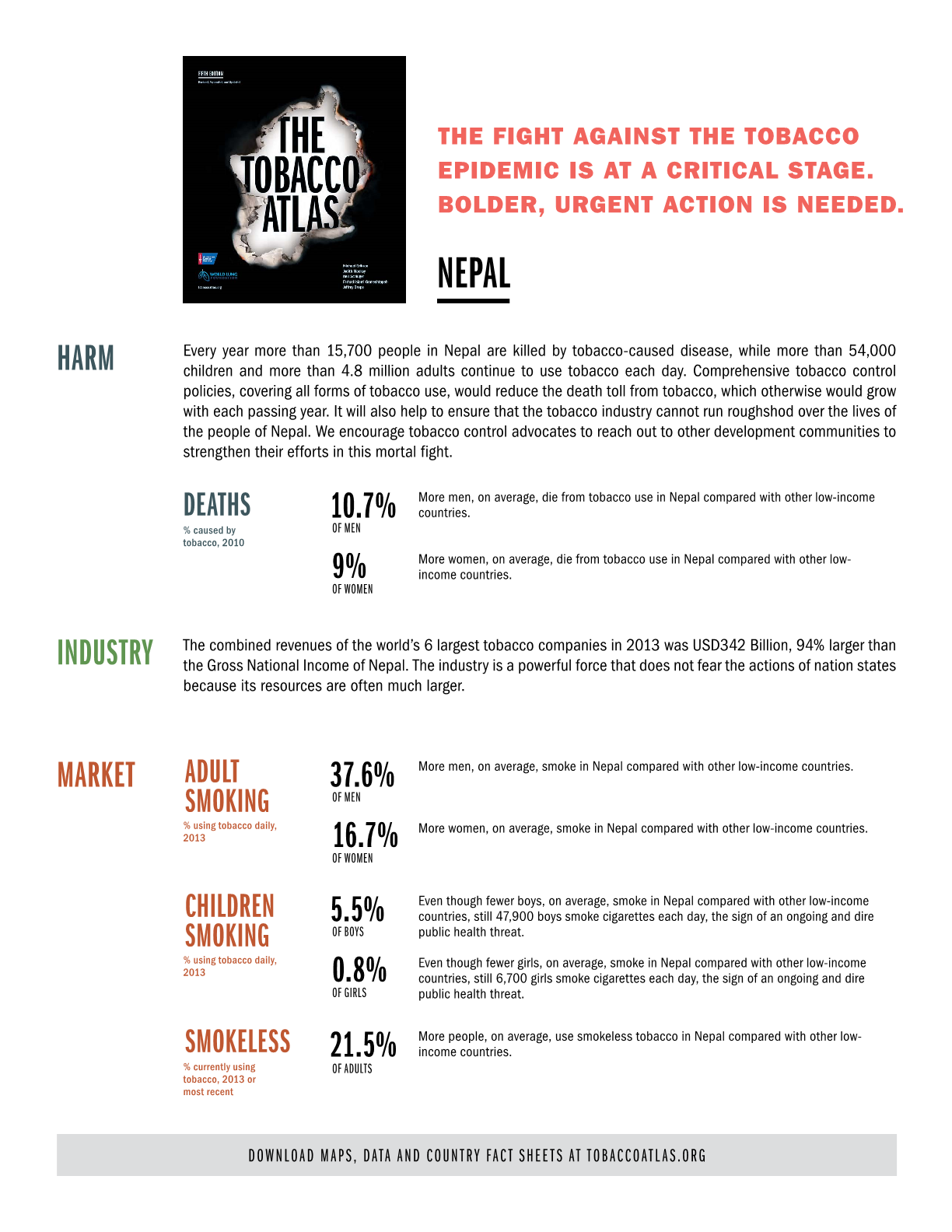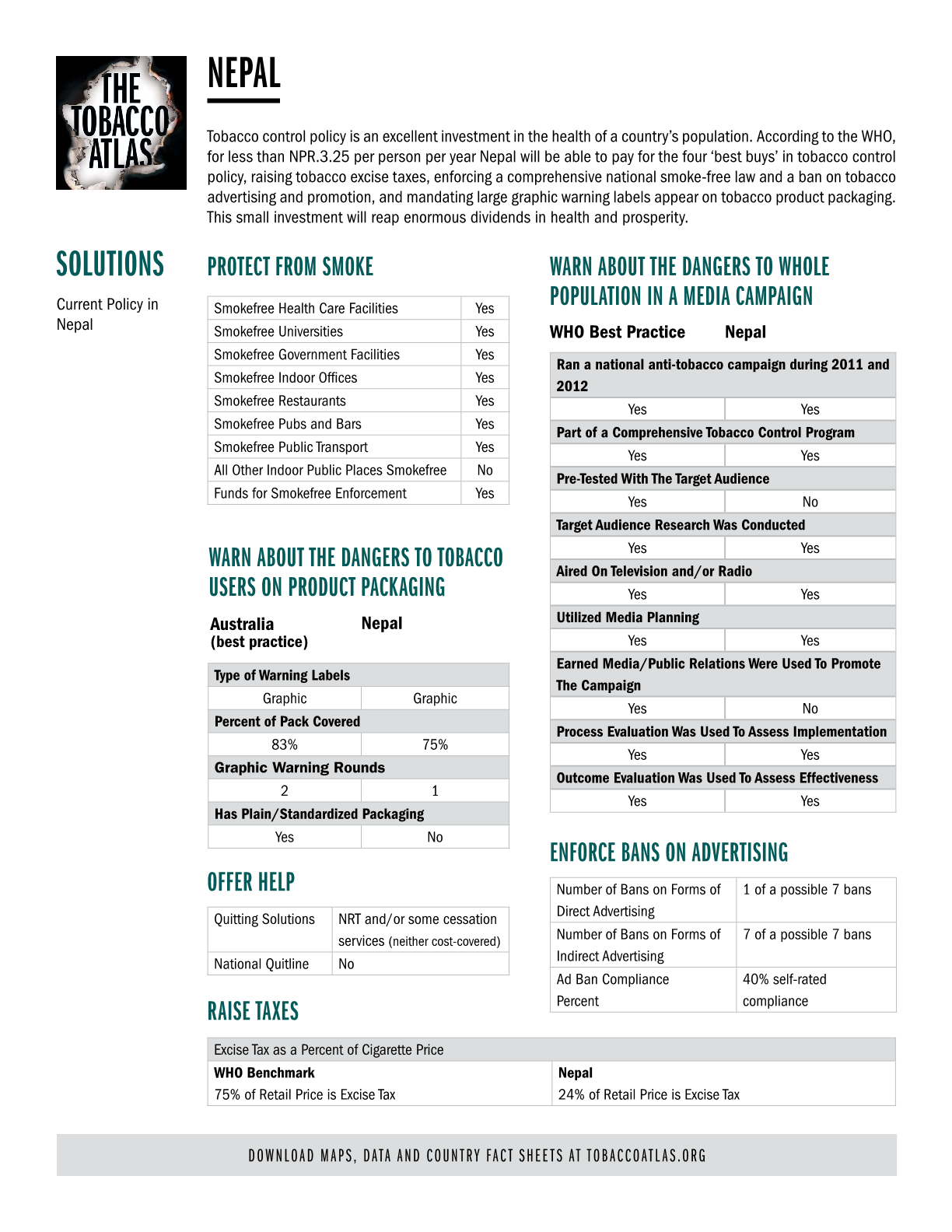- It will demonstrate the threats that the tobacco industry poses to the sustainable development of all countries, including the health and economic well-being of their citizens.
- It will propose measures that governments and the public should take to promote health and development by confronting the global tobacco crisis.
- Highlight the links between the use of tobacco products, tobacco control and sustainable development.
- Encourage countries to include tobacco control in their national responses to 2030 Sustainable Development Agenda.
- Support Member States and civil society to combat tobacco industry interference in political processes, in turn leading to stronger national tobacco control action.
- Encourage broader public and partner participation in national, regional and global efforts to develop and implement development strategies and plans and achieve goals that prioritize action on tobacco control.
- Demonstrate how individuals can contribute to making a sustainable, tobacco-free world, either by committing to never taking up tobacco products, or by quitting the habit.
- Tobacco kills up to half of its users.
- Tobacco kills more than 7 million people each year. More than 6 million of those deaths are the result of direct tobacco use while around 890 000 are the result of non-smokers being exposed to second-hand smoke.
- Nearly 80% of the world’s more than 1 billion smokers live in low- and middle-income countries.
- Monitor tobacco use and prevention policies
- Protect people from tobacco use
- Offer help to quit tobacco use
- Warn about the dangers of tobacco
- Enforce bans on tobacco advertising, promotion and sponsorship
- Raise taxes on tobacco.
On World No Tobacco Day 2017, WHO is highlighting how tobacco threatens the development of nations worldwide, and is calling on governments to implement strong tobacco control measures. These include banning marketing and advertising of tobacco, promoting plain packaging of tobacco products, raising excise taxes, and making indoor public places and workplaces smoke-free.
Tobacco’s health and economic costs
Tobacco use kills more than 7 million people every year and costs households and governments over US$ 1.4 trillion through healthcare expenditure and lost productivity.
कसरी छुटाउन सकिन्छ त सुर्तिजन्य पदार्थको लतधुम्रपान स्वास्थ्यका लागि हानिकारक छ भन्ने भनाई आज भोली हरेक व्यक्तिलाई थाहा भएको सामान्य कुरा हो । धुम्रपान तथा सुर्तीजन्य पदार्थहरुको प्रयोगले हाम्रो स्वास्थ्यमा ठुलो असर पार्दछ भन्ने थाहा हुँदाहुँदै पनि विश्वभर तथा हाम्रो नेपालमा कुनै न कुनै वाहानामा धेरै व्यक्तिहरु सुर्तीजन्य पदार्थको सेवनको लतमा फसेको पाइन्छ । महिला, पुरुष, धनी, गरिव ,सडकमा आफ्नो जिवन विताउने वाल वच्चाहरु, स्वास्थ्यकर्मि, डाक्टर,स्कुले विधार्थी देखी वृद हजुरवा हजुरआमा समेतले लुकेर होस या खुला रुपमा नै किन नहोस चुरोट तथा अन्य कुनै न कुनै सुर्तिजन्य पदार्थको सेवन गरिरहेका छन । कोहीले साथीभाईको करले त कोहीले तनाव घटाउनको लागी भन्दै कुनै न कुनै किसिमको वहानामा सुर्तीजन्य पदार्थको सेवनलाई आफ्नो दैनिकी वनाई रहेका छन । ……………………. पुरा पढ्नु होस ।
World No Tobacco Day 2014-Raising tax on tobacco


